《ENVIRONMENTAL LAW HANDBOOK》
| 作者 | 编者 |
|---|---|
| 出版 | 未查询到或未知 |
| 参考页数 | 507 |
| 出版时间 | 没有确切时间的资料 目录预览 |
| ISBN号 | 0865870985 — 求助条款 |
| PDF编号 | 811440828(仅供预览,未存储实际文件) |
| 求助格式 | 扫描PDF(若分多册发行,每次仅能受理1册) |
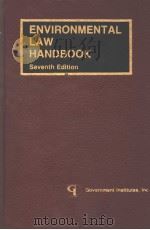
Chapter 1 FUNDAMENTALS OF ENVIRONMENTAL LAW1
Introduction1
Lawyers and Laymen1
What Is Environmental Law?2
Environmental Law and the Courts2
States and United States Court Systems3
Cases Which the United States Courts Can Decide3
United States Court System5
Courts in Practical Perspective6
Common Law6
Case Law8
Obiter Dicta8
Torts8
Nuisance9
Private or Public Nuisances9
Noise Nuisance11
Other Nuisances12
Some Defenses to Nuisance Actions14
Coming to a Nuisance15
Trespass16
Negligence18
Res Ipsa Loquitur19
Violation of a Statute or Ordinance20
Dangerous Substances - Strict Liability21
Defenses to an Action for Negligence22
Contributory Negligence22
Assumption of Risk22
Proving Negligence22
Sovereign Immunity and Torts23
Constitutional Law24
Constitution and Government Authority24
Limits on Governmental Action24
Search Warrants and the Fourth Amendment24
Prohibition Against Self-Incrimination:The Fifth Amendment27
Due Process, the Fifth and Fourteenth Amendments27
Police Power and Due Process28
Prohibition Against Taking Property Without Compensation29
Commerce Clause Limitations31
Equal Protection of the Laws32
Constitutional Protection of the Environment33
Defenses35
Generally35
Laches36
Contractual Authorization37
Public Authorization37
Vagueness37
Unreasonableness and Impossibility of Performance38
Parties40
Standing, or Who May Sue40
Class Actions41
Evidence42
Burden of Proof42
Judicial Notice42
Presumptions43
Admissions43
Questions of Law and Fact43
Relevant and Material43
Res Inter Alios Acta43
Hearsay43
Opinion Evidence44
Best Evidence Rule44
Parol Evidence Rule44
Witnesses44
Privileged Communications45
Your Own Reports as Evidence Against You46
Samples or Physical Evidence46
Evidence Collection and Constitutional Rights46
Administrative Law47
Generally47
Powers of Governmental Agencies47
Procedures48
Evidence in Administrative Law48
Hearings49
Judicial Review49
Attorneys’ Fees - New Concepts51
Criminal and Civil Liability51
Chapter 2 NATIONAL ENVIRONMENTAL POLICY ACT55
Introduction55
Overview56
Title Ⅰ: Policy and Goals56
Enforceability of Title I Policy and Goals56
The Environmental Impact Statement57
Title Ⅱ: Council on Environmental Quality57
How NEPA Relates to Other Federal Law58
Environmental Impact Statements62
Background: CEQ’s NEPA Regulations62
Proposed Actions Requiring an EIS64
Findings of No Significant Impact66
EIS Requirements for Special Types of Federal Action67
Procedure and Time of Required Issuance69
Who Can Prepare the EIS and the Lead Agency System70
Delegation70
The Lead Agency System71
Contents72
“International” Environmental Statements73
Applicants’ Environmental Reports74
The Seven Other “Action-Forcing” Provisions75
Who Can Sue for Alleged Violations of NEPA78
Chapter 3 WATER POLLUTION CONTROL81
Introduction - The Historical Perspective81
Water Quality Standards81
Effluent Criteria Under the Refuse Act82
The Need for New Authority82
The Clean Water Act82
The Federal-State Water Pollution Control Program Overview83
Goals and Objectives83
Mechanisms for Achieving Goals and Objectives83
Permitting Under The National Pollutant Discharge Elimination System84
Program Scope and Applicability85
Permitting Procedures87
Permit Conditions90
Establishing the Limitations for Inclusion in the Permit —Technology and Water Quality-Based Limits93
Pollutants to be Addressed94
Required Level of Treatment--Technology-Based Limits for “Existing” Direct Discharges99
Required Level of Treatment--Technology-Based Limits for “New Source” Direct Discharges102
Required Level of Treatment—Technology-Based Limits for Indirect Dischargers (Pre-Treatment)104
Technology-Based Treatment Standards for Industrial Dischargers Dealing With Process Variability106
Technology-Based Treatment Standards--Publicly Owned Treatment Works109
More Stringent Treatment Required to Meet Water Quality-Related Effluent Limitations111
Controlling Non-Process-Related Waste Discharges115
Controlling Area-Wide Non-Point Source Pollution --Section 208 Planning116
Stormwater Discharges and Best Management Practices117
Oil and Hazardous Substances119
Oil119
Hazardous Substances121
Other Critical Elements of the Water Act Program122
Abatement Actions and Sanctions122
Citizen Suits125
Provisions Having Special Applicability126
Discharges to Ground Waters126
Dredged or Fill Material127
Ocean Discharge Criteria129
Thermal Discharges129
The EPA Construction Grants Program129
The Cost Recovery Program130
User Charges131
Cost Effectiveness and Eligibility134
Construction Grants--Summary135
Pollution Control Planning in the Current Regulatory Climate136
EPA Standards Development Programs136
Negotiation of Permit Conditions137
Discussions With Regional Office and State Officials138
State and Local Planning Activities138
Conclusion138
Annex A—Section 307—Toxic Pollutants140
Annex B142
Chapter 4 AIR POLLUTION CONTROL143
Introduction143
History144
Establishment of Air Quality Standards145
Air Quality Criteria145
National Ambient Air Quality Standards145
Air Quality Control Regions148
State Implementation Plans (SIP’s)148
Content of SIP148
Role of Technology and Economics152
Use of Dispersion Techniques153
Transportation Control Plans154
Maintenance of Ambient Air Quality Standards155
Indirect Source Review156
Variances157
New Source Review in Non-Attainment Areas158
Prevention of Significant Deterioration (PSD)160
Energy Related Authority164
Conversions to Coal164
Energy Emergency Provisions165
National Stationary Source Emission Standards165
New Source Performance Standards165
Hazardous Emission Standards167
Information Gathering Authority168
Enforcement Authority169
Compliance Orders and Noncompliance Penalties170
Emergency Authority171
Ozone Protection172
Motor Vehicle Emission Control172
Introduction172
Statutory Standards and Suspension173
Certification175
Compliance by Production Vehicles175
Assembly Line Testing176
Warranties176
Recall177
Vehicle Inspection177
Enforcement178
Fuel and Fuel Additive Provisions178
Registration178
Regulatory Authority179
Aircraft Emission Control181
Citizens Suits182
Judicial Review183
Acid Rain184
Chapter 5 RESOURCE CONSERVATION AND RECOVERY ACT187
Solid and Hazardous Wastes187
Solid Waste Disposal and Resource Recovery Act188
Resource Conservation and Recovery Act of 1976(RCRA)189
General Provisions190
Objectives of RCRA190
Def initions191
Guidelines192
Office of Solid Waste and Authorities193
Hazardous Waste Management193
Identification of Hazardous Wastes194
Hazardous Waste Lists196
Hazardous Waste Characteristics198
Ignitability198
Corrosivity198
Reactivity199
Extraction Procedure (EP) Toxicity199
Mixtures of Hazardous Wastes and Solid Wastes199
Used, Reused, Recycled or Reclaimed Hazardous Wastes200
Notification of Hazardous Waste Management Activities200
Generators of Hazardous Waste201
Small Generators201
Requirements Imposed Upon Generators202
Recordkeeping203
90-Day Storage Exemption204
Labels and Containers204
Transporters of Hazardous Wastes204
On-Site versus Off-Site205
Transporter Requirements205
Hazardous Waste Discharges206
Enforcement206
Treatment, Storage, and Disposal (T/S/D)207
Active/Inactive Facility208
Interim and Permitted Facilities208
Exempt T/S/D’s208
Standards of General Applicability210
Standards For Specific Types of T/S/D Facilities211
Standards for Special Types of T/S/D Facilities212
Permits212
State’s Hazardous Waste Programs213
Inspection and Enforcement214
State or Regional Solid Waste Plans215
Role of the Department of Commerce216
Federal Responsibilities216
Citizen Participation and Other Provisions216
Imminent and Substantial Endangerment Under RCRA216
Employee Protection and Other Provisions217
Research, Development, Demonstration, and Information217
Implementation of the Resource Conservation and Recovery Act218
Enforcement of the Resource Conservation and Recovery Act218
State and Local Activity219
Interstate Commerce and Solid Waste219
“Bottle Bills”220
Solid Waste Facility Siting220
Prospectus221
Chapter 6 TOXIC SUBSTANCES223
Introduction223
Problem of Unregulated Chemicals224
The Need for a Toxic Substances Control Act225
Legislative Background226
Toxic Substances Control Act of 1976227
Premanufacture Notification--Statutory Provisions227
Proposed PMN Regulations229
Interim PMN Policy230
Proposed Testing Guidelines Under Section 5231
PMN Exemption: Section 5(h)(4)231
Significant New Use Regulations (SNURs)232
Rejection of PMNs233
Inventory List: Section 8(b)235
Reporting Requirements239
Section 8(a)239
Proposed 8(a) Regulation, 1980239
Section 8(a) Final Regulations240
Reporting of Health and Safety Studies: Section 8(d)240
Reports of Health and Safety Studies243
Hazard Reporting Requirements244
Substantial Risk Notification: Section 8(e)244
Significant Adverse Reactions: Section 8(c)246
Testing Requirements247
General Testing Requirements: Section 4(a)247
Testing Reimbursement249
Priority List for Chemical Testing249
EPA’s Enforcement Role253
PCB and CFC255
Imminent Hazards: Section 7255
PCB Regulation256
Conf identiality260
Citizen Enforcement and Legal Fees262
Relationship of TSCA to Other Federal Laws263
Existing Toxic Substances Laws264
Clean Air Act264
Water Pollution Act265
Occupational Safety and Healthdministration266
Consumer Product Safety Commission267
The Proposed Federal Cancer Policy267
Goals of Proposed Federal Cancer Policy267
Background of the Policy268
Scientific Principles of the Cancer Policy268
Implementation Regulations of the Cancer Policy269
Conclusion271
Chapter 7 FEDERAL REGULATION OF PESTICIDES273
Background to the Federal Regulation of Pesticides273
Early Efforts at Pesticide Regulations273
Creation of the Environmental Protection Agency275
Pesticide Statute276
Key Provisions of the Federal Insecticide, Fungicide and Rodenticide Act276
Registration Procedures277
Federal Control Over Pesticide Use278
Cancellation279
Suspension281
Ordinary Suspension281
Emergency Suspension283
Balancing Test in FIFRA284
Trade Secrets285
1972 Amendments to FIFRA287
Indemnities288
“Featherbedding” or “Me-Too” Registrants289
Essentiality in Registration292
Intrastate Registrations293
Scientific Advisory Committees294
Standing for Registration, Appeals, and Subpoenas295
Judicial Appeals297
Exports and Imports299
Disposal and Recall301
Experimental Use Permits302
1975 Amendments to FIFRA303
Need For FIFRA Renewal304
Controversy over USDA’s Veto of EPA304
Requirement of Consultation By EPA With USDA305
Scientific Advisory Committees306
Economic Impact On Agriculture Statement307
Self-Certification of Private Applicators308
1978 Amendments to FIFRA309
Conditional Registration309
Generic Pesticide Review310
Greater State Authority311
Compensation and Confidentiality311
Efficacy312
1980 Amendments to FIFRA312
Two-House Congressional Veto Over EPA Regulations312
Changes in the Function and Design of the Scientific Advisory Panel (SAP)313
Legal Cases313
Basic Cases314
Label Restrictions: Theory and Practice316
Administrator’s Flexibility318
Concerning The Scientific Advisory Committee318
Concerning The Administrative Law Judge319
National Environmental Policy Act320
Pesticide Regulation Under Other Federal Statutes321
Pesticides Under the Food, DrugCosmetics Act321
Clean Air Act of 1970323
Federal Water Pollution Control Act of 1972324
Solid Waste Disposal Acts325
Occupational Safety and Health Act325
Federal Hazardous Substances Act326
Federal Pesticide Monitoring Programs326
The RPAR Process327
Chapter 8 THE OCCUPATIONAL SAFETY AND HEALTH ACT331
Introduction331
Comparison of OSHA and EPA331
Legislative Framework332
Purpose of the Act332
Coverage of the Act333
Federal and State Employees334
Health Standards334
Slow Pace of Standards Development:The Noise Example335
Standard Setting336
Consensus Standards: Section 6(a)336
Standards Completion Process337
Permanent Standards, Section 6(b)337
Emergency Temporary Standards340
Safety Standards341
Areas Covered by the Standards342
Variances344
Temporary Variances344
Permanent Variances345
Compliance and Inspections345
Field Structure345
Role of Inspections345
Training and Competency of Inspectors345
Citations346
Willful Violations346
Repeat Violations347
State OSHA Program347
The Concept347
Critiques348
Consultation349
Overlapping Jurisdiction350
Occupational Safety and Health Review Commission351
National Institute of Occupational Safety and Health352
Reprisals Against Worker Complaints: Section 11(c)353
Constitutional Challenges:Barlow Case355
Appendix A: Outline of Key Provisions of OSH Act of 1970357
Chapter 9 NOISE363
Introduction363
The Characteristics of Sound364
Biological Effects of Noise365
Physical Effects365
Physiological Effects367
OSHA Regulation of Noise368
The Present OSHA Standard369
Enforcement371
OSHA Noise Hearings371
Economic and Technical Feasibilility374
Hearing Protection Devices376
The Feasibility and Balancing Debate376
The Long-Anticipated OSHA Noise Standard379
Environmental Protection Agency Authority380
The Noise Act of 1970381
The Noise Control Act of 1972381
Noise Sources and Criteria383
Setting of Noise Emission Standards383
Federal, State and Local Jurisdiction Under Section 6385
Warranties387
Advertising Restrictions387
Labeling387
Development of Low-Noise-Emission Products388
Prohibitions and Penalties389
Control of Transportation Noise389
Aviation Noise390
Railroad and Motor Carrier Noise Standards392
EPA’s Coordination Role Within the Federal Government393
Quiet Communities Act of 1978394
Current Regulatory Actions on Noise395
Regulatory Activity Concerning Noise in the Aviation Industry395
Retrofit Of Existing Aircraft396
Airports and Aircraft Operating Procedures397
DOT’s Concorde Decision400
FAA Noise Certification403
Major Sources of Noise403
Air Compressors405
Trucks407
Power Mowers408
Garbage Truck Compactors409
Wheel and Crawler Tractors410
Buses410
Snowmobiles410
Motorcycles411
EPA Motor Carrier Regulations411
EPA Noise Standard For Railroads412
Chapter 10 COMPREHENSIVE ENVIRONMENTAL RESPONSE COMPENSATION AND LIABILITY ACT415
Overview415
“Super” Funds416
Key Purpose416
Agency Responsibilities416
Toxic Substances and Disease Registry417
Reportable Quantities418
Response and Clean Up Authority419
National Contingency Plan420
Revised National Contingency Plan421
National Contingency Plan Scope and Definitions421
Responsibilites Under The National Contingency Plan422
Response Teams422
National Response Center423
Regional Contingency Plan423
Oil Removal Under the National Contingency Plan423
Response Actions and Cleanup of Hazardous Substances424
National Priority List of Problem Sites424
Removal and Remedial Action Under the National Contingency Plan425
Cleanup Responsibilities Under the National Contingency Plan425
Liability426
Financial Responsibility428
Vessels428
Facilities429
Motor Carriers429
Claims and Penalties429
Hazardous Substances Response Fund429
Establishment of the Response Fund429
Fund Uses430
Procedures for Claims Against the Response Fund431
Post-Closure Liability Trust Fund432
Reports432
Regulatory Authority433
Judicial Review433
Relationship to Other Laws433
Assistant Administrator for Solid Waste435
Chapter 11 ENVIRONMENTAL AUDITING437
Introduction437
Reasons for Conducting an Environmental Audit439
Scope of the Environmental Audit443
Designing the Environmental Audit445
Audit Methodology445
Substance-by-Substance Analysis445
Unit Process Analysis446
Methods of Disposal447
Legal Requirements Checklist448
Analysis of Policy and Organization Issues449
Protecting the Confidentiality of the Audit450
Composition of Audit Team451
Conducting the Environmental Audit452
Data Collection452
Data Analysis454
Audit Report454
Conclusion455
Chapter 12 LAND USE: MAJOR ISSUES IN THE CONTROL OF INDUSTRIAL DEVELOPMENT457
Introduction457
Background and Nature of the Problem458
Siting Problems460
Local Issues461
State Law Requirements462
State and Federal-State Planning464
Statewide Land Use Planning464
Land Use Planning for Specific Areas465
Planning for Achievement of Categorical Pollution Control Objectives466
Other Planning Requirements470
Specific Federal Authorizations470
Lead Agency Proceedings472
Federal-State Coordination472
“Third Party” Contracts473
Legislated Procedures473
Approach Under Existing Law473
Participate in the Land Use Planning Process474
Select Sites and Formulate Plans Based on a Detailed Understanding of the Siting Process474
Structure the Procedure and Climate in Which the Siting Decision Will Be Made475
File the Applications475
Make the Reviewing Agencies Do It Right475
Make Sure That Actual Construction Is in Accordance With Your Authorization and the Final EIS476
Prospects For Change: Specific Siting Legislation476
The Deepwater Port Example476
Time Limitation477
Single Coordinated Procedure477
One Environmental Impact Statement Based on Identified Criteria478
Problems With the Deepwater Port Act Approach479
Specific Legislation Begets Stringent Criteria479
“Time Limits” Can Be Illusory480
It Is Difficult to Enforce the “One Window” Concept480
The “One Environmental Impact Statement” Concept Failed480
The Future of the Deepwater Port Approach480
Conclusion481
Table 12-1 Decision Matrix482
《ENVIRONMENTAL LAW HANDBOOK》由于是年代较久的资料都绝版了,几乎不可能购买到实物。如果大家为了学习确实需要,可向博主求助其电子版PDF文件。对合法合规的求助,我会当即受理并将下载地址发送给你。
高度相关资料
-

- ADMINISTRATIVE LAW
- 1940
-
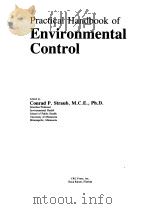
- PRACTICAL HANDBOOK OF ENVIRONMENTAL CONTROL
- 1989 CRC PRESS INC
-
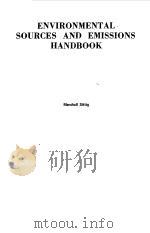
- ENVIRONMENTAL SOURCES AND EMISSIONS HANDBOOK
- 1975 NOYES ADTA CORPORATION
-
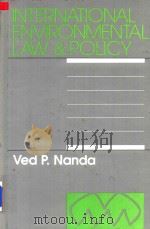
- International Environmental Law & Policy
- 1995 Transnational Publishers
-

- A Reader In Environmental Law
- 1999 Oxford University Press
-
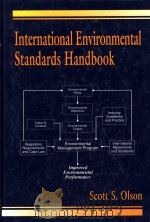
- International environmental standards handbook
- 1999 Boca Raton : Lewis Publishers
-
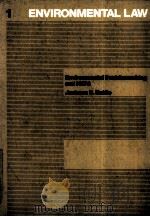
- ENVIRONMENTAL LAW VOLUME ONE ENVIRONMENTAL DECISIONMAKING AND NEPA
- 1986 ANDERSON PUBLISHING CO.
-

- EQUALITY IN LAW BETWEEN MEN AND WOMEN IN THE EUROPEAN COMMUNITY BELGIUM
- 1998 MARTINUS NIJHOFF PUBLISHERS
-

- International environmental law
- 1991 Transnational Publishers
-

- INTRODUCTION TO ENVIRONMENTAL LAW
- 1996 DELMAR PUBLISHERS
-
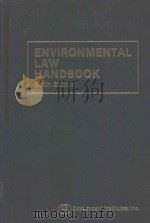
- ENVIRONMENTAL LAW HANDBOOK SIXTH EDITION
- 1979 GOVERNMENT INSTITUTES INC
-
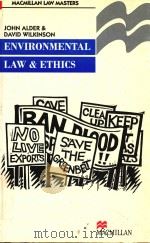
- Environmental Law and Ethics
- 1999 Macmillan
-
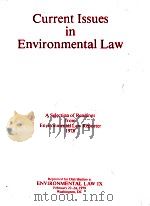
- CURRENT ISSUES IN ENVIRONMENTAL LAW
- 1978 ENVIRONMENTAL LAW IX
提示:百度云已更名为百度网盘(百度盘),天翼云盘、微盘下载地址……暂未提供。➥ PDF文字可复制化或转WORD

